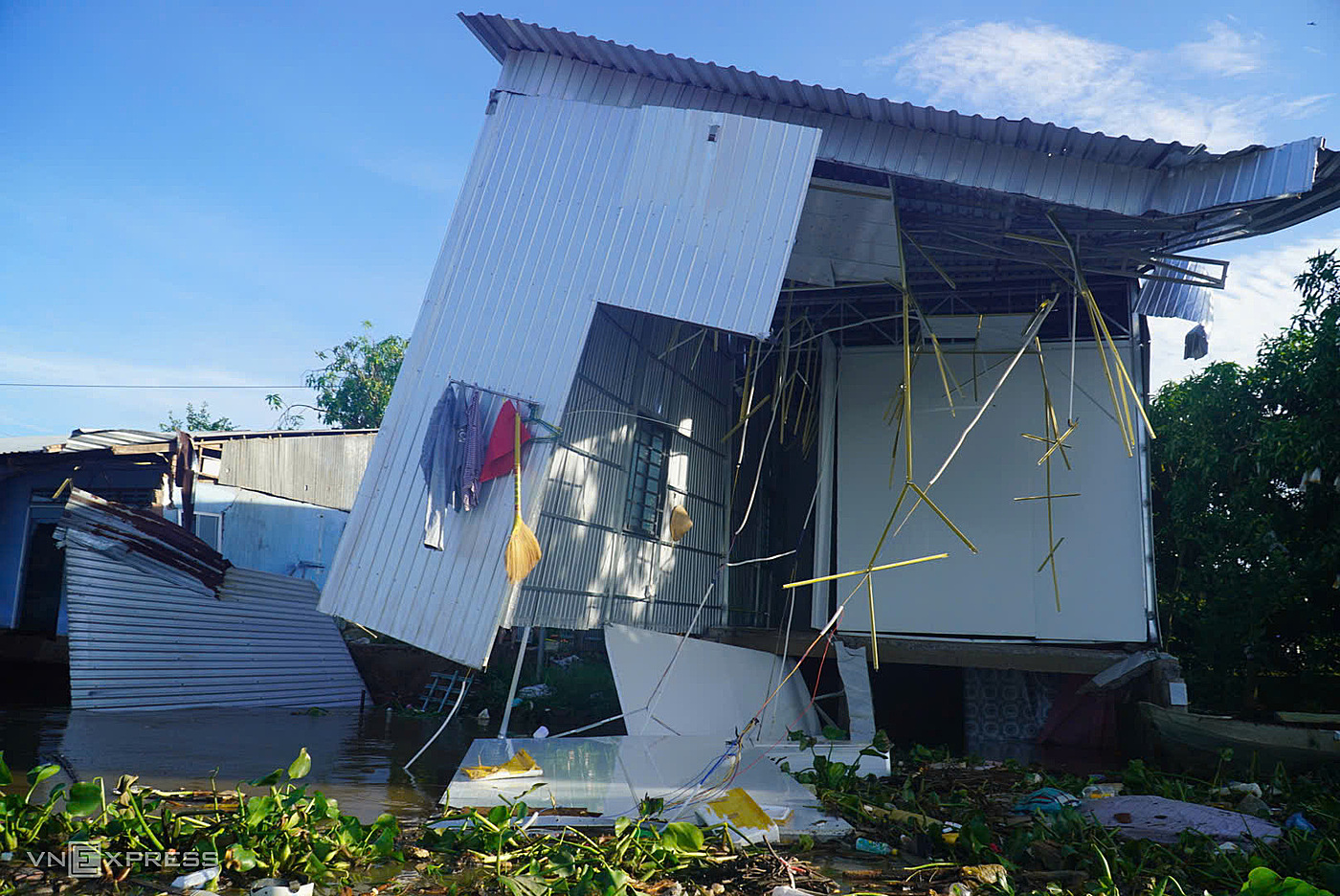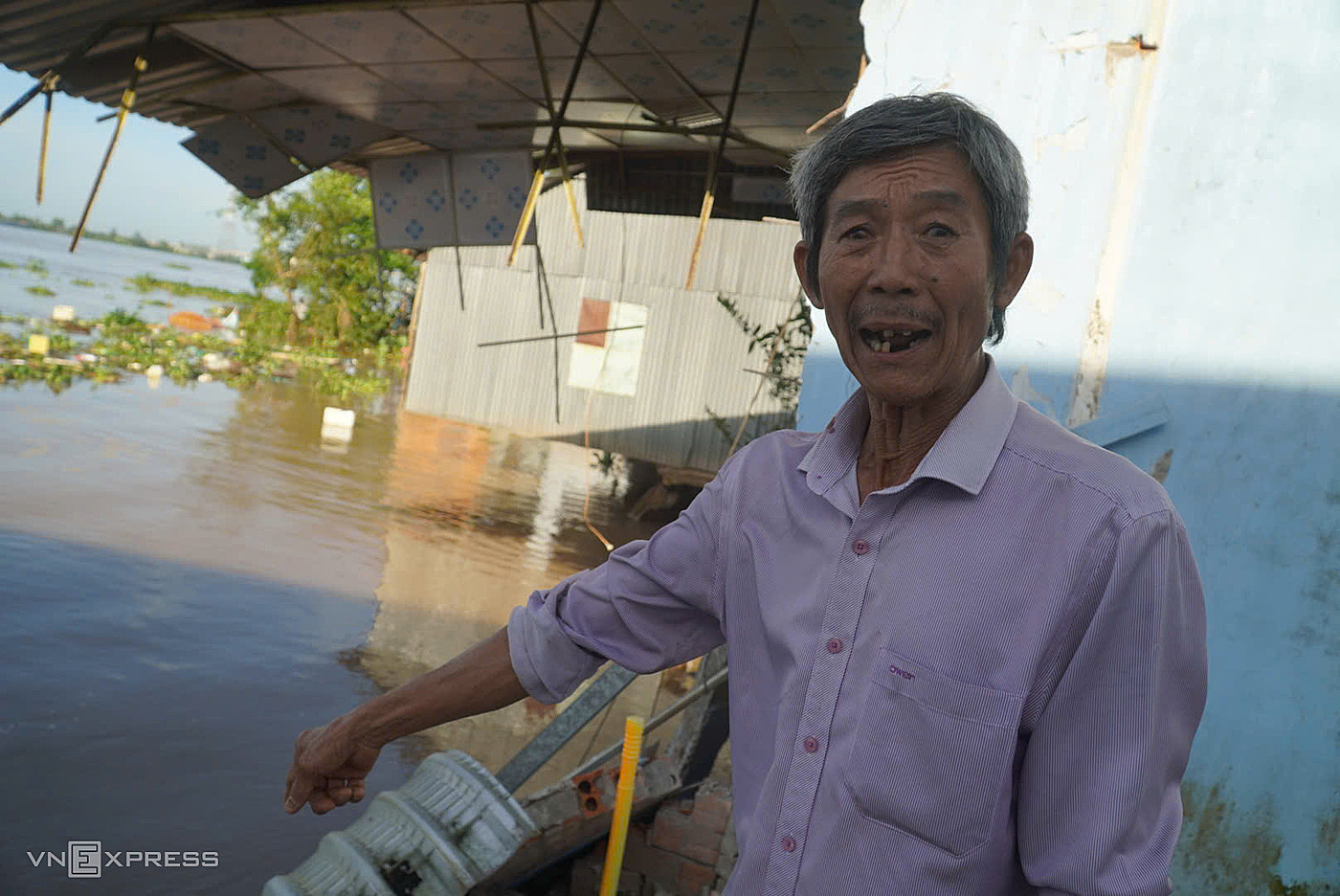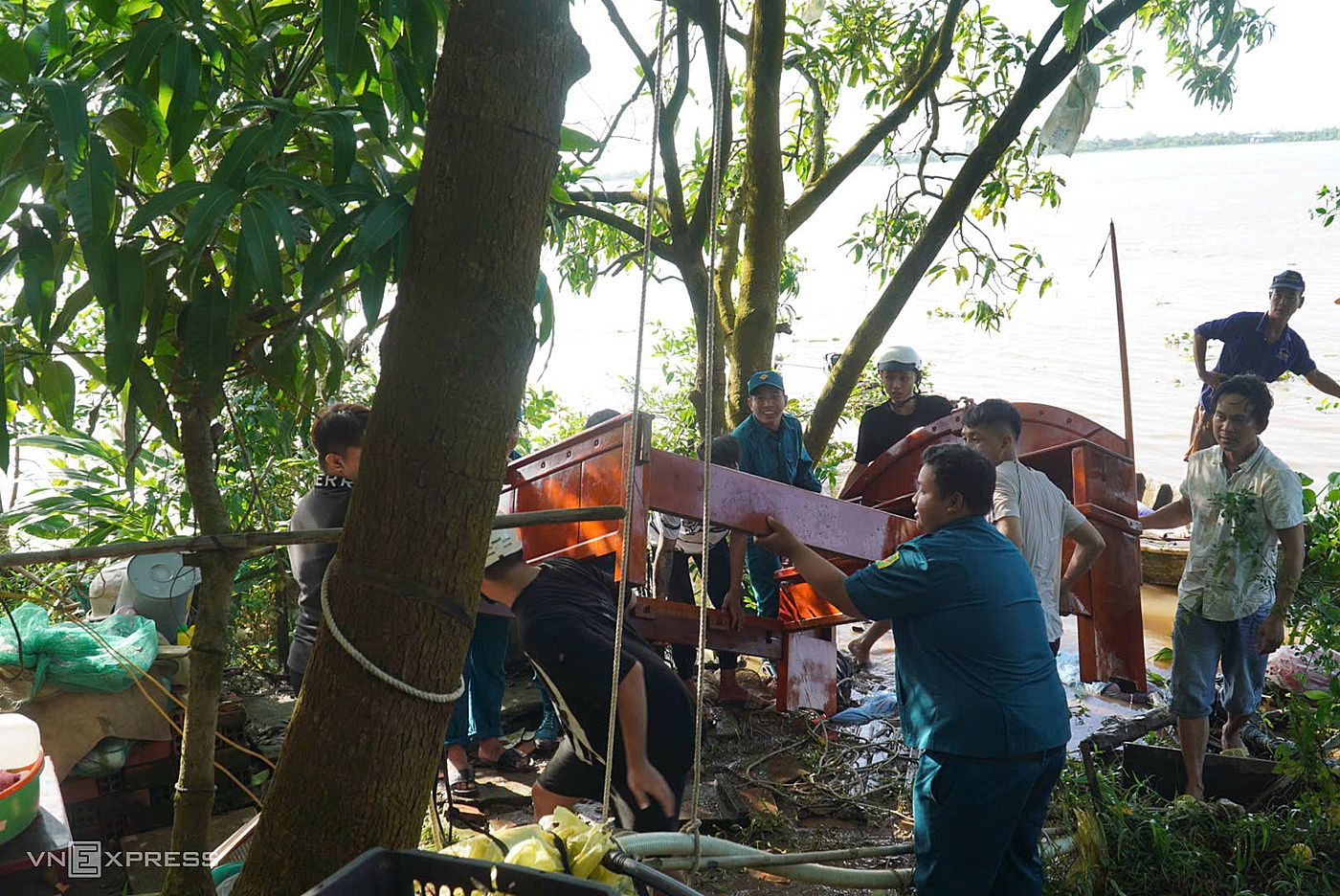Around 2:30 a.m., a 100-meter section of the riverbank, 20 meters deep, collapsed. 62-year-old Tran Van Nhi was asleep when he heard a loud noise. Before he could react, he and his 20-meter-long house were swept away by the water. He managed to swim to shore with only minor scratches.
 |
The landslide caused six houses along the Tien River to collapse into the river. Photo: Ngoc Tai |
The landslide caused six houses along the Tien River to collapse into the river. Photo: Ngoc Tai
Nearby, Nguyen Van Dat’s newly built house also suffered significant damage. "Hearing the neighbors shouting, I only had time to get my wife and children out. We couldn't take anything with us," he said.
According to reports, the landslide destroyed six homes, displacing about 20 residents. Two of the houses were completely lost. More than 10 other homes are now threatened as the erosion continues.
 |
Mr. Nhi recounts the moment he and his house were swept away by the water. Photo: Ngoc Tai |
Mr. Nhi recounts the moment he and his house were swept away by the water. Photo: Ngoc Tai
Vo Truyen Thong, Vice Chairman of the People's Committee of Cao Lanh ward, said authorities are helping residents salvage belongings and demolish and relocate houses from the danger zone. The ward will propose investing in a two-kilometer embankment along the Tien River, extending a previously completed section.
 |
Authorities help residents salvage their belongings. Photo: Ngoc Tai |
Authorities help residents salvage their belongings. Photo: Ngoc Tai
The Mekong Delta currently has over 800 erosion hotspots along rivers and coastlines, spanning over 1,000 kilometers. Each year, 300-500 hectares of land, along with numerous houses and infrastructure, are lost. The main causes are reduced sediment flow, sand mining, land subsidence due to groundwater extraction, high tides, and loss of protective forests.
The most affected areas are An Giang, Dong Thap, and Ca Mau, with damages amounting to tens of billions of Vietnamese dong and forcing many households to relocate. Authorities have built embankments, planted mangrove forests, managed sand mining, and developed relocation plans, but the threat remains serious.
Ngoc Tai












